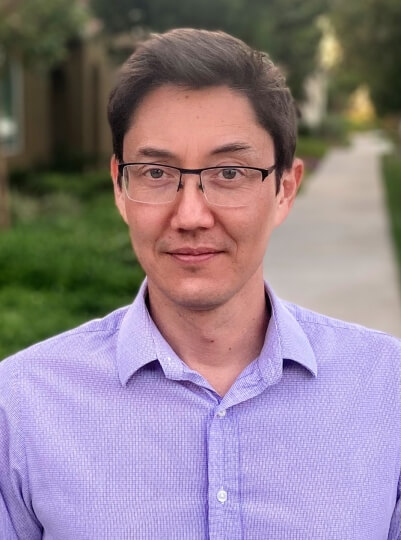Chris Wagner, S.M. '02, Ph.D. '06
When removing a tumor from a patient with cancer, surgeons use a range of tools, techniques and insights to try to save that patient’s life. But not every surgery is straightforward. The tumor could be too enmeshed with a vital organ to remove, or it could be somewhere difficult to reach with human hands. The tumor could also have metastasized, turning one into many that would all have to be removed.
Chris Wagner, S.M. '02, Ph.D. '06, is designing a technology and software platform to help surgeons target even the most difficult tumors. He’s the co-founder of Current Surgical, which is developing a needle-shaped device that can deliver precise bursts of heat to destroy tumors, a process known as ablation, without damaging the surrounding tissue. The smart needle will also utilize sensors and machine learning to help inform surgeons throughout the procedure.
“I really like interacting with surgeons,” Wagner said. “The idea that they’re so confident they can both cut into you and make you better is inspiring. They’re a compelling set of people. What I’ve realized gets me going in my career is the idea that they’re doing these life-altering procedures without the best tools.”
As an undergraduate studying computer science and electrical engineering at the University of California-Berkeley, Wagner had never considered a career in medical technology. But as he was applying to graduate schools, he interviewed with Robert Howe, Abbott and James Lawrence Professor of Engineering at the Harvard John A. Paulson School of Engineering and Applied Sciences (SEAS). Howe’s Harvard Biorobotics Lab focuses on the intersection of biological processes and mechanical engineering, including medical and rehabilitative technology. Wagner came aboard as a Ph.D. student in engineering science in Howe’s lab, researching topics such force feedback in surgical robotics and sense-of-touch interfaces.
“Rob was and still is my mentor,” Wagner said. “Almost every day, I think about him or the lessons I learned from him. That relationship was key, as was the lab he built and people he brought in. The density of smart, driven, compelling, nice and amazing people – I’ve never been in that situation since. It was a really magical time in my life.”
After graduating, Wagner worked in the Boston University Intelligent Mechatronics Laboratory, where he developed the vision system for a steerable surgical needle. He later developed an orthopedic surgical robot at Acrobot Company Limited and delved into the world of entrepreneurship, founding several small medtech companies and working as a consultant for several more. He co-founded Current Surgical, which is based in Washington, D.C., in 2020.
“I didn’t start out with an interest in being an entrepreneur, but this happens to be the right way to get this technology all the way to the hands of doctors and have patients derive that benefit,” he said. “If this works, there’s no limit to the amount of diseases we can treat and people we can help.”
Current Surgical is in many ways the culmination of all the work Wagner has done at and since leaving SEAS. His experiences designing previous medical technology, where he’d start with the needs of the end-user and work backwards to the technology that would support those needs, went into the design and development of the smart needle. His experiences as a founder and consultant have helped him navigate the world of venture capital and investment, leading to securing $3.2 million in seed funding in early 2023.
“I’ve learned a lot more about the business aspects and how to get a product to market,” Wagner said. “I learned why certain products fail. For example, a company may focus their efforts around their patented approach, but the technology is overly expensive; or they have great technology, but the market isn’t big enough.”
Current Surgical is still developing its technology in a pre-clinical setting, but has hit several major milestones in the last year. In June, the company received a $400,000 grant from the National Institute of Health’s National Cancer Institute. This past January, their technology successfully generated enough heat to ablate a tumor in a piece of tissue outside the body.
“We knew it should work, but there’s nothing like actual proof,” Wagner said. “Our next major milestone is proving the technology in the right size and scale inside of a living body, which should happen over the next two quarters.”
Press Contact
Matt Goisman | mgoisman@g.harvard.edu
